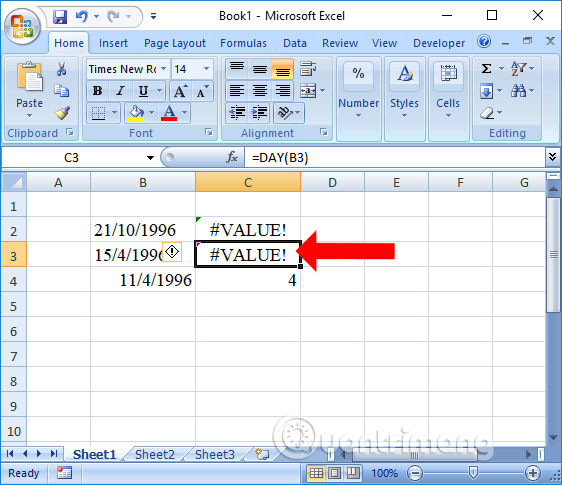

- #Excel for mac date day functions serial number
- #Excel for mac date day functions serial
- #Excel for mac date day functions full
- #Excel for mac date day functions windows
If the date is hard-coded into the formula, you have to open up and edit each formula one at a time. Note: Using cell references is always better than hard-coding the date into the formula like this: =DATEDIF(“3/15/11”, “12/7/16”, “d”), because you can easily change the date on the spreadsheet by just entering or copying a new date on top of the old one. The answer is 5 years, 8 months, 22 days. For example, to get years, months, and days between Maand December 7, 2016, enter this formula using cell references instead of actual dates: =DATEDIF(A23,B23,”y”) &” years, “&DATEDIF(A23,B23,”ym”) &” months, “ &DATEDIF(A23,B23,”md”) &” days”. You can also nest the DATEDIF() function, combine it with other Excel functions such as TODAY() and NOW(), such as above, or nest it within itself to get all three arguments-the number of years, months, and days. The result is now rounded up to the nearest month or year. If you want to calculate months or years rounded up, add half a month or half a year to the formula like this: =DATEDIF(A19,B19+15,”m”) for half a month (or 15 days) or =DATEDIF(A21,B21+183,”y”) for half a year (or 183 days). The DATEDIF() function always rounds down (by default) to the nearest whole month or year.Ģ. So, if you open this spreadsheet tomorrow, the answer will be one day fewer. Note : Remember, when using the NOW() or TODAY() function, the answer changes every day. For example, how many days between NOW() and Christmas? Use this formula to find out: =DATEDIF(NOW(),””,”d”). Or, as a response to other functions such as the TODAY() function or the NOW() function.

#Excel for mac date day functions full
The result of this formula is three full years. The formula for this example is =DATEDIF(“”, “”, “y”). Note, however, that if you enter the month and day with no year, Excel assumes the current year. You can enter the date in any format you like. As text strings: that is, dates inside of quotation marks. The formula for this example is =DATEDIF(A5,B5,”d”). For example, the number of days between (in cell A5) and (in cell B5). As cell references: that is, you can point to or enter the cell address.
#Excel for mac date day functions windows
Note: Excel cannot calculate dates before Januon Windows PCs, and Januon Apple Mac systems.Ģ. The result for this formula is four months. JD Sartainįor example, to find the number of months between J(start_date) and (end_date), write this formula: =DATEDIF(42537,42674,”m”).
#Excel for mac date day functions serial
When you enter a date, then use the General format, it displays as an Excel serial number. As serial numbers, which is Microsoft Excel’s unique method of storing dates so you can use them in calculations. You can enter dates for this formula four different ways:ġ. You can use the DATEDIF() function to determine someone’s age in years, months, and days to calculate your corporate anniversary date to find out how old your appliances are or the age of your computer equipment to determine the number of days, months, or years between two dates to countdown the number of days before Christmas and so much more. Use the letters “YD” to show the difference in days, and ignore years

Use the letters “YM” to show the difference in months, and ignore days and years Use the letters “MD” to show the difference in days, and ignore months and years Use the letter “D” to specify the difference in days Use the letter “M” to specify the difference in full months Use the letter “Y” to specify the difference in full years For example, the following codes explain how these values are used in the function’s syntax: The “unit” is specified using the unit argument, which is a text code. Unit: the time unit to use (years, months, or days)Īnd the syntax looks like this: =DATEDIF(start_date,end_date,unit)
#Excel for mac date day functions serial number
Start_date: start date in Excel date serial number formatĮnd_date: end date in Excel date serial number format The purpose of this function is to calculate the time between a user-specified starting and ending date in days, months, or years. If your spreadsheet experiences began with Lotus, which is true for many thousands of users, you’ll be happy to know that this old Lotus function is still alive and kicking. It’s operational in all Excel versions, but it’s not on the Formulas menu or in the Help menus after Excel 2000.

DATEDIF(), which means Date + Dif, is a compatibility function left over from Lotus 1-2-3 that Microsoft adopted in Excel version 2000, which is the only version that explains how this function works.


 0 kommentar(er)
0 kommentar(er)
